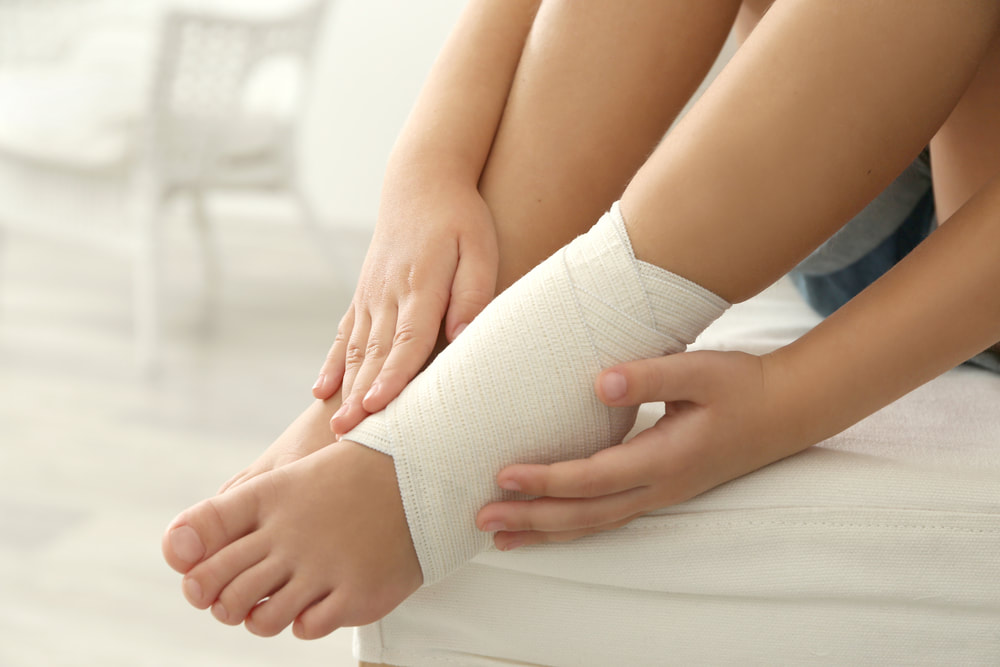|
In between an exercise session or before halfway through your cycling you let out a loud shout holding the wrist/leg calling for help. It would mostly be that you have sprained/strained your leg. While both words are used interchangeably in practical life each holds a very different meaning from the other.
Sprain Quite often after a game of basketball or running we complain of a sprain whose prime areas of occurrence include the wrists, ankles, thumbs and knees. This is nothing but a torn or twisted ligament. Ligaments are tough tissues that act as connecting factors between bones or cartilages located around the joints. The severity of the sprain is directly dependent on the number of tissue fibers affected. Common symptoms include pain, bruise, swelling, inability to move the joint freely or apply weight on the joint. Common causes that can induce a sprain include:
This is a torn or twisted muscle or tendon mostly occurring in the legs, back, knee and feet. Tendons are tough bands of fibrous tissues that connect muscles to bones. Unlike a sprain that happens suddenly, a strain can happen suddenly or over time. Common symptoms include swelling, bruising, pain, muscle weakness/spasms, muscle cramps and restricted movement in the affected area. A strain that occurs suddenly is called an acute strain while the one that takes time to develop is called a chronic strain each of which has different causes. Causes of acute strain include slipping, jumping, running or lifting a heavy object. Causes of chronic strain include involvement in some sports activity such as tennis, running or rowing (basically any sports that involves repetitive movement) and sitting/standing in odd positions might also trigger a chronic strain at times. Treatment Both strain and sprain follow the RICE technique to relieve pain and swelling. This includes: Rest:Immediately stop the ongoing activity, be it sports or physical exercise, and don’t apply pressure over the affected limb. Ice: Keep an ice pack over the injured area for a maximum of up to 20 minutes every 2-3 hours. In the absence of ice pack, you can use even a pack of chilled milk or frozen vegetables. Compression:Decrease swelling by wrapping the affected area with a bandage and if you feel numb/increased pain over time loosen the bandage. Elevation:Always try to keep the injured area elevated above the chest level whenever possible. When results are not favorable and if you experience any of these its better to meet a physician:
Comments are closed.
|
AVOID FRAUD. EAT SMART.+91 7846 800 800
AuthorDietitian & Nutritionist Dr. Nafeesa Imteyaz. Archives
July 2024
Categories
All
Dr. Nafeesa's Blog @blogspot |
- Home
- Written Testimonials
- Consult
- Clinics
- Blogs
-
Diet & Nutrition
- Diabetes Reversal
- IVF IUI not needed for PCOS PCOD Infertility
-
Medical Nutrition
>
-
Disease & Conditions
>
- Infertility | PCOS
- Diabetes Mellitus
- Cholesterol
- Hypothyroid
- Kidney Problems
- Hypertension
- Cardiovascular Diseases
- Liver Diseases
- Gastro intestinal disorder
- Cancer
- Metabolic Disorders
- Orthopedic Disorders
- Eating Disorders
- Dietary Recall
- Weight Record Filled By Clients
- Online Payment Transaction Details
- Online Clients Weight Check Form
- Our Program Package Service Charges
- Weight Record 2017 Clients
- Measurements sent by Clients
- Terms & Conditions Of Payment
- Thanks. Your Form is Submitted
- Video Testimonials
- Lifestyle & Wellness
- Lifestyle & Wellness Blog
- Allergy & Intolerance
- Weight Loss / Gain
- Weight Loss / Slimming Blog
-
Disease & Conditions
>
- Life Cycle Nutrition >
- Sports Nutrition >
- Integrity in Nutrition
- Knowledge Centre
© COPYRIGHT 2022. ALL RIGHTS RESERVED. FRST HEALTHCARE PVT LTD.
Dr. Nafeesa Imteyaz of First Eat Right clinic, is the Best Dietitian Nutritionist in Bangalore. Best Dietitian Nutritionist in Pune. Best Dietitian Nutritionist in Hyderabad. Best Dietitian Nutritionist in Chennai. Best Dietitian Nutritionist in Mumbai. Best Dietitian Nutritionist in Delhi. Best Dietitian Nutritionist in Kolkata.


